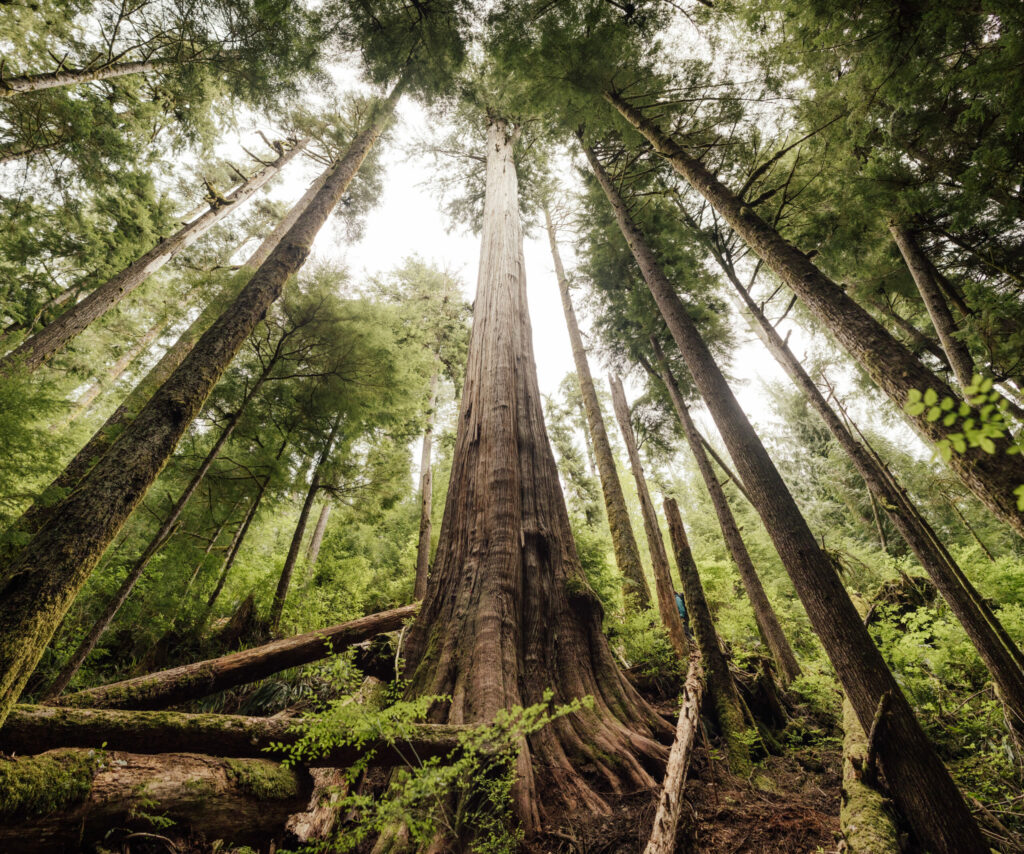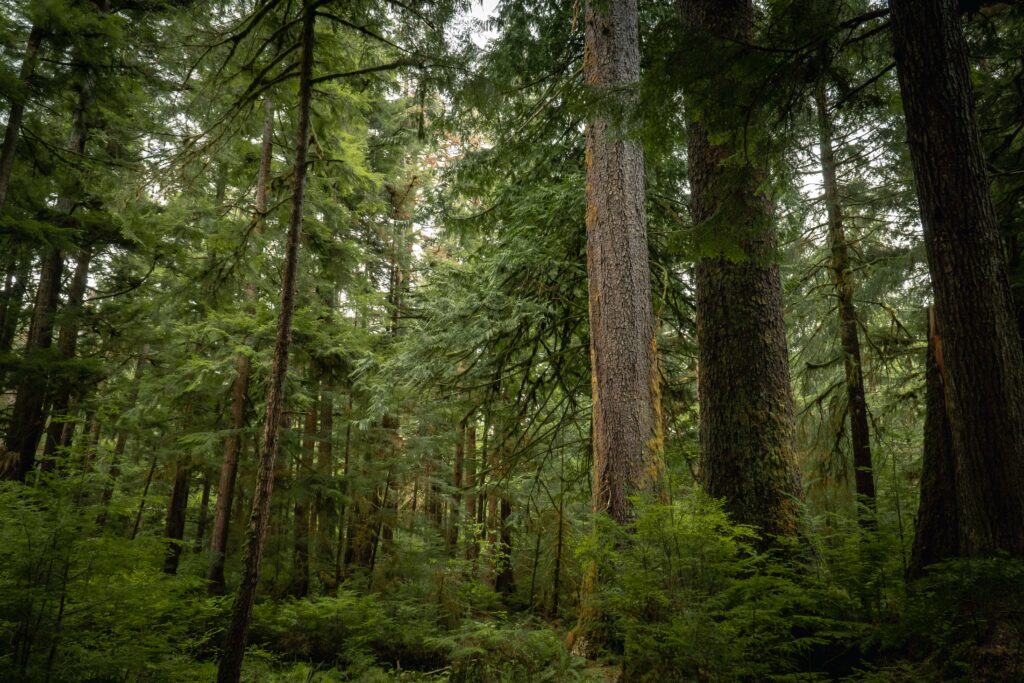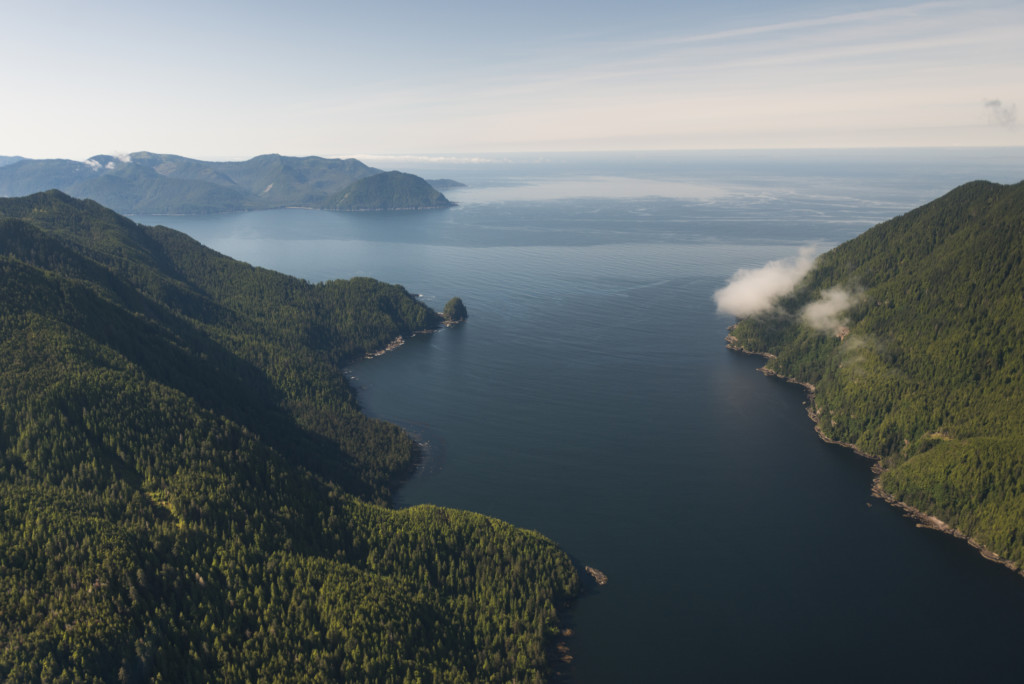
Celebrating 7 years of The Narwhal — and gearing up for the next 7
Between a fresh take on engagement and our new life on video, our team is...
A few days before Christmas, I watched as Guujaaw, former president of the Council of the Haida Nation, testified at the B.C. Supreme Court. The legendary Haida chief was the Crown’s star witness in a $75 million lawsuit brought by Teal Cedar Products Ltd. against the province of B.C. and the Haida Gwaii Management Council.
The suit has been going on for months, but not until Guujaaw arrived did the judge hear an Indigenous perspective on what the forest industry has done to the landscape, and people, of Haida Gwaii.
As The Narwhal reported in September, Teal (better known as Teal-Jones, the logging company that made Fairy Creek famous) is suing B.C. for profits it claims to have lost when the company was forced to stop logging old growth on Haida Gwaii in 2011. That’s when the Haida Gwaii Management Council imposed ecosystem-based management on forestry operations throughout the archipelago, including the two tenures Teal operated there at the time.
The Haida Gwaii Management Council — a co-defendant in the case — is a five-member board that has authority over all resource extraction on Haida Gwaii; the province and the Council of the Haida Nation each appoint two members, and jointly choose a chair. As their lawyers took great pains to demonstrate, the management council is an independent body. But its creation was a result of the Haida Gwaii Reconciliation Act of 2010, and questions of reconciliation are at the heart of this case: Teal’s core argument is that the rules weren’t changed to protect the forest, which would have been contractually valid, but rather to appease the Haida Nation.

The province counters that reconciliation was but one thread in a fabric that included forest health and public interest. According to Crown lawyers, a government may protect any or all of those things, reconciliation very much included, without having to compensate a business. “Teal did not have a private law right to be insulated from the effects of the evolving forest management regime, the effects of the evolution of public values, or the effects of the evolving imperative to reconcile,” the province argued.
Whoever wins, the precedent set in this case will reverberate throughout the country. But it wasn’t the future I thought about while listening to Guujaaw speak for almost two straight days. It was the past.
Guujaaw is in his seventies, with long silver hair braided down a gently stooped back. His presence in the courtroom was a physical reminder of the turbulent history underpinning this lawsuit. That history is something the very infrastructure of court can seem designed to suppress; the ornate decor, the elaborate costumes of the judges and lawyers, its relentless adherence to demonstrable fact and calm, orderly argument, all conspire to separate feeling from knowing.
Guujaaw’s testimony brought those two qualities together, in stark contrast to the bureaucrats, politicians, registered foresters and corporate executives who’d taken the stand before him. They had all described the forests of Haida Gwaii in numerical terms: annual allowable cuts, cubic meters of cedar, fir and hemlock, market values, company spreadsheets, declining profit margins. But not until Guujaaw started talking 52 days into the proceedings did Haida Gwaii itself, and the people who live there, come into view.
Guujaaw described a time near the end of the last ice age when his homeland was a tundra; his people got there before the trees. Then cedar arrived, and his ancestors learned to use it for everything from canoes and totem poles to big houses. Beneath the canopy, an undergrowth filled with food and medicine proliferated. Guujaaw described growing up among aunts and uncles who’d spent their summer childhoods hidden in remote camps so that Indian agents, who took children to residential schools, wouldn’t find them.
In the 1960s, logging took off on Haida Gwaii, pushing beyond the shoreline to penetrate the steep watersheds filled with old growth. Guujaaw’s father was a part-time logger who told his son about a day his logging crew scooped gravel from a creek to pave a logging road. The road sparkled with millions of red salmon eggs. Hundreds of gulls descended to feast, stirring one of the truckers to drive through the flock and see how many birds he could run over.

The industry “accelerated and accelerated” as Guujaaw grew up, he said. By the 1980s, when the rate of clearcutting peaked, forestry meant “absolute plunder. You know, landslides are occurring, creeks are getting wiped out. All in front of the people who are supposed to be managing it.” It was, in his view, “a full-on colonial disruption of the land.”
Watching all this turned a young Guujaaw into one of the most radical land defenders in Canadian history. He led the historic blockades that began in Haida Gwaii in the 1980s before spreading to Clayoquot Sound, spurring the first War in the Woods, which at the time was the largest act of civil disobedience in Canadian history.
But as Guujaaw made clear, the Haida weren’t alone in their struggle to protect their archipelago from the ravages of a logging industry that had the full support of the provincial government in Victoria. From the very beginning, the Haida were joined by the non-Indigenous residents of Haida Gwaii, including many of the loggers (some Haida themselves) and government employees, too. All helped the Haida figure out where the next cut block was set to fall, which watershed was slated for destruction.
“Loggers would tell us, ‘You better see what they’re doing up in block so-and-so’,” Guujaaw recalled of his blockading days. “People who worked at the ministry of forests would give us a heads up. Government people that were stuck in a system, you know. They would warn us, and we’d have to go out and deal with these problems. But we would always be told by someone.”
After the blockades, the battles moved to court. By then president of the Council of the Haida Nation, Guujaaw became the appellant in one of the most important Supreme Court decisions to shape Indigenous law: the 2004 Haida decision, which established the Crown’s duty to consult. That momentous decision didn’t just change how the province dealt with the Haida Nation, or how logging would proceed on their land. It marked a turning point in resource extraction throughout the country, an end to the days when governments and corporations could ignore whose land they were operating on.
The matter of sovereignty over Haida Gwaii remains a point of conflict between the Haida Nation and the province of B.C., and that conflict goes much deeper than Teal’s current fight with the province. “Our people never, ever acquiesced to the colonial government,” Guujaaw said at one point, essentially rejecting the entire premise of Teal’s case: in his view, the province never had any authority to hand out logging tenures over Haida Gwaii in the first place. “We have a totally different view of what they’re doing. They’re encroaching on our land.”
That view is about to be tested in court. Even as the Teal case plays out, Guujaaw and the Haida Nation are preparing to finish what they started twenty years ago. In 2004, they began a quest for recognition of Aboriginal title over Haida Gwaii, and new hearings will begin in 2026. When that happens, the same Crown that just called Guujaaw as a friendly witness will be on the opposite side of the table arguing against him.

It’s another way in which Guujaaw embodies the strange duality of nation-to-nation affairs in Canada: having been ordered by the courts to recognize some measure of Indigenous jurisdiction, the Crown is simultaneously an adversary and reluctant ally to First Nations, carrying out reconciliation with one hand while fighting Aboriginal title with the other. Guujaaw brought that up, too.
“Currently we’re sitting down with the government, trying to reconcile and do what we can before we go into court,” he said. “Because from the beginning that’s what the Supreme Court has said: ‘Yes, there’s Aboriginal title. It exists, and here’s what it means. So go back and try to figure it out.’ And a big part of it is reconciling with the people who live [on Haida Gwaii]. You know, to us, that’s probably the most important part of it. How are we going to live together?”
That’s more than a legal question on Haida Gwaii, where roughly half the five thousand inhabitants are Haida and the other half non-Indigenous. As Guujaaw made clear, the question of how to live together is a daily matter. “We’re just all living there, working, raising our families, kids going to school, intermarried. We’re all just people.”
Teal, of course, has no interest in such matters. Its only concern is to prove that B.C. breached the terms of Teal’s forestry tenure by allowing reconciliation to get in the way of logging old growth. When Teal’s turn to cross-examine came, its lawyer focused largely on getting Guujaaw to acknowledge that the changes to Haida Gwaii’s forestry regime — including the creation of the Haida Gwaii Management Council itself — were all part of a “journey of reconciliation.” Guujaaw didn’t disagree. But like many other witnesses before him, he made the point that reconciliation is ultimately inextricable from environmental protection.
Whether the judge concludes that reconciliation did indeed cost Teal $75 million, and that taxpayers should reimburse them for that expense, is something we won’t know until the second half of 2024, when the decision is expected.
In the meantime, I was left to reflect on the countless cases like this one that have occupied Canadian courts since 1982, when the concept of Aboriginal Rights was formally written into the Constitution with the addition of Section 35. These fights have occupied entire generations like Guujaaw’s. And they are still gathering steam.
On the day Guujaaw finished his testimony, a news item blipped across national headlines: the federal government spent $26 billion on Indigenous legal claims in 2023 and expects to spend nearly $76 billion more on pending claims that are currently in court, or “contingent liabilities” in the language of Public Accounts of Canada. That $76 billion is a seven-fold increase from 2015.
According to the federal government, this expenditure “reflects the progress the federal government has made to advance reconciliation.” But none of that money was willingly spent. Indigenous nations had to fight for every penny in court. When I read that line, I was reminded of something Guujaaw said on the stand.
“Reconciliation wasn’t as if some government or another said, ‘Oh, that’s a good idea,’ or ‘That’s the right thing to do,’” he told the court. “No. We dragged them kicking and screaming to the table.”
Updated Jan. 8, 2024, at 3:23 p.m. PT: A previous version of this story stated the War in the Woods was widely regarded as the birth of Canada’s environmental movement. It has been updated to state the War in the Woods was, at the time, the largest act of civil disobedience in Canadian history.
Get the inside scoop on The Narwhal’s environment and climate reporting by signing up for our free newsletter. On a warm September evening nearly 15...
Continue reading
Between a fresh take on engagement and our new life on video, our team is...

The public has a few days left to comment on Doug Ford’s omnibus development bill....

115 billion litres, 70 years to fix, $5.5 billion in lawsuits
